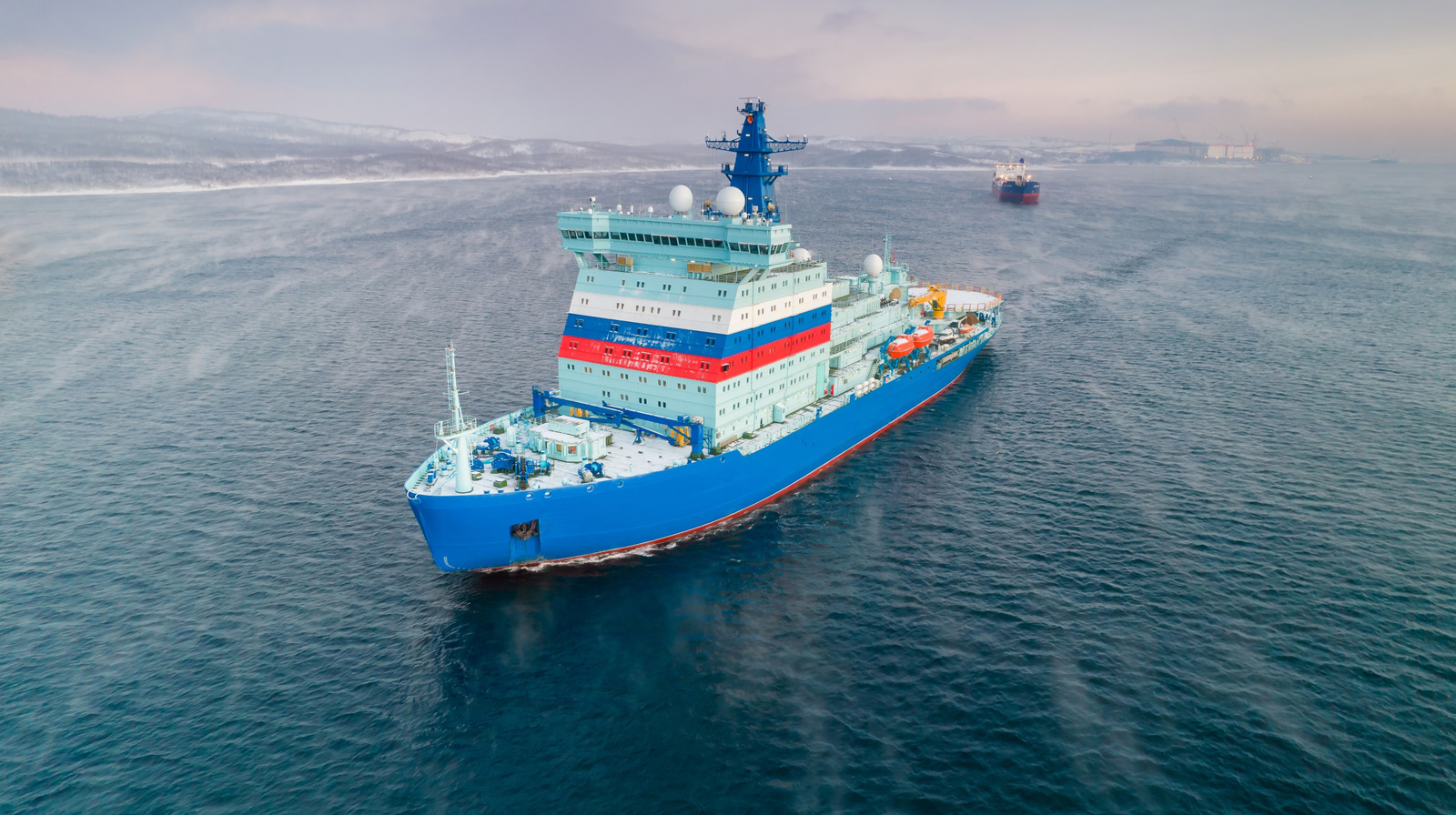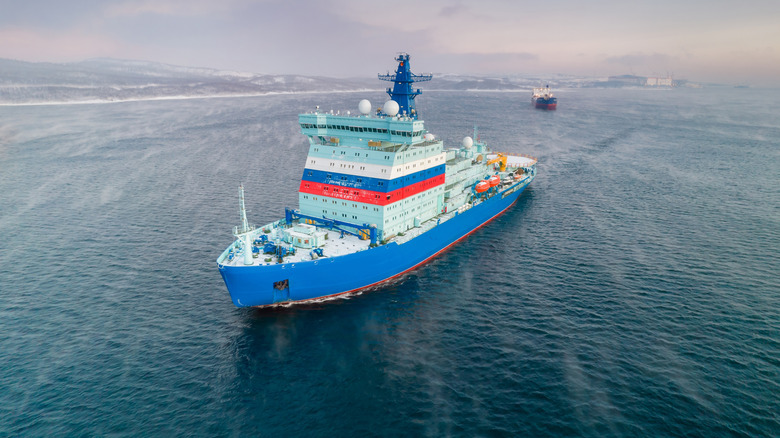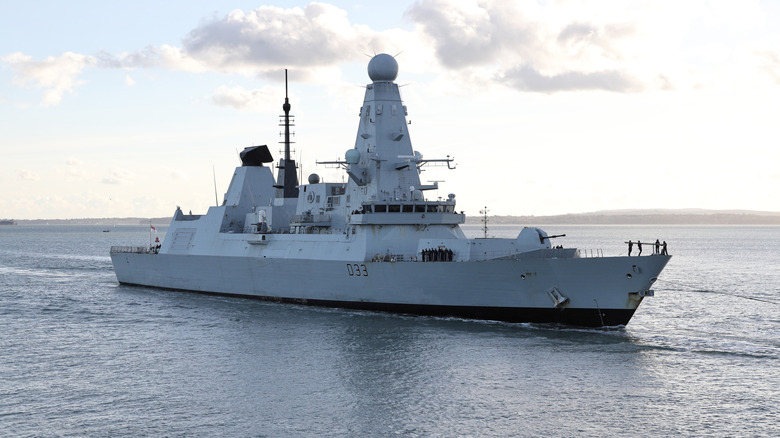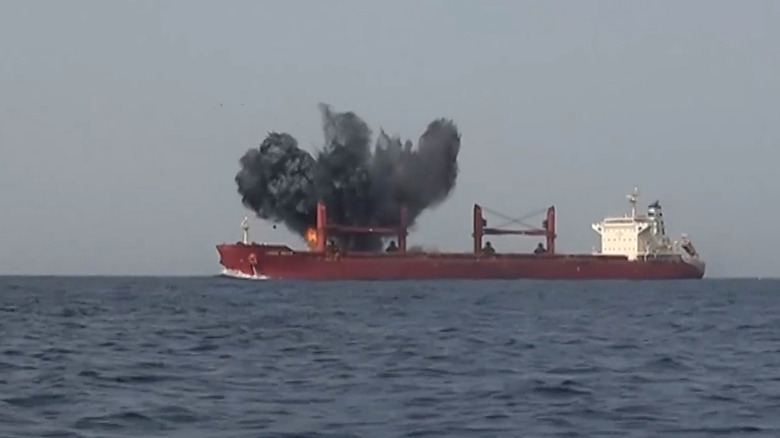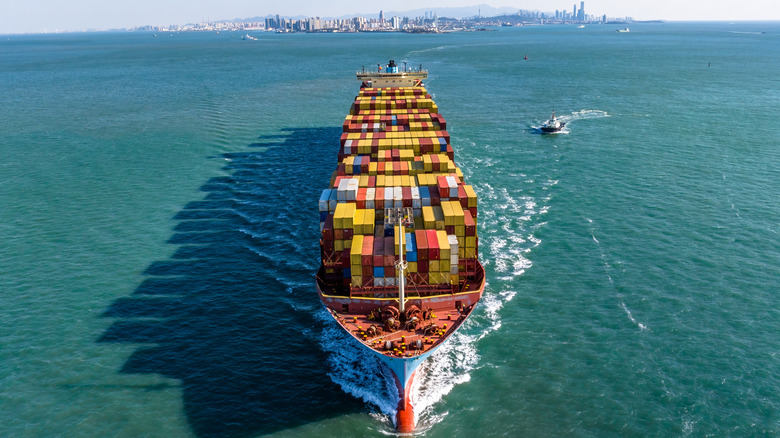As countries around the world try to tamp down emissions (well, some of them, anyway), a major target for improvement is the shipping industry. Ships produce 3% of all the world’s emissions per year, more than the whole country of Japan. There are a number of options on the table for bringing that number down, from biofuels to batteries to good old-fashioned sails (which are actually solar panels). But there’s another one sitting right there, which has actually been in use for decades: The power of the atom.
As Bloomberg reports, a joint effort is underway by Core Power Ltd, HD Korea Shipbuilding & Offshore Engineering, and Southern Co to start making commercial ships that run on nuclear. Specifically, they are looking to incorporate the new, cheaper, and theoretically safer sodium fast reactors under development by TerraPower, one of Bill Gates’ major investments. If all goes well, the first new civilian nuclear ship in decades should hit the water in 2035.
Of course, that’s a big “if.” First, TerraPower needs to, you know, actually build a working reactor. Even if it does, the ships will need to clear all sorts of regulatory hurdles. Even if the ships can do that, they will also need to get insured. I don’t know when the last time you tried to insure a nuclear-powered vehicle was, but it turns out, it’s not so easy. Even if you could get insured, certain countries don’t even allow nuclear ships to dock there at all.
There are reasons for optimism around the tech, though. Many of the issues that have prevented wide-scale adoption of nuclear in the past are shifting. What’s more, the U.S. Navy is starting to poke at the idea again, and if the Navy starts heavily investing again, civilian ships might just follow.
The military might go nuclear (peacefully)
As the Proceedings of the U.S. Naval Institute points out, the U.K. is already looking at adding smaller, fourth-generation nuclear reactors to surface ships in its navy. Right now, only aircraft carriers and submarines run nuclear reactors. For reasons of cost, nuclear was just never as favorable as gas-turbine engines for most ships, so the tech didn’t spread to the rest of the surface fleet.
If the U.K. can change that equation with cheap reactors, however, suddenly nuclear starts to look like a great option. For one thing, due to the AUKUS — Australia, U.K., U.S. — security pact, we already have a system in place for sharing defense technology with one another, specifically including nuclear reactor tech. That would let any breakthroughs from either country easily spread to the other two. What’s more, America is looking to upgrade its nuclear-powered submarine fleet soon anyway, which would very likely involve new reactor designs. Those new designs could theoretically be put into the surface fleet, potentially for all three countries.
The Navy really needs a heavy power plant onboard future ships, because the future of weaponry is electromagnetic. Current ship-based laser weapons (yes, we live in the future) run at 60 kilowatts, but as they grow larger and more powerful, they could start requiring megawatts of power. Railguns, another emerging weapons tech, also need absolutely huge amounts of power. Gas generators on modern surface ships can only make so much electricity before they run out of fuel. Nuclear reactors, by contrast, would only need to be “refueled” (get new fuel rods) once every few decades — and these ships are only intended to last a few decades anyway.
So the possibility of the military going nuclear is real. If it does, then expect things like port regulations start to shift to allow for those ships to dock there. It also increases the number of shipyards that can work with the tech. Basically, the entire infrastructure would get more nuclear-friendly, opening the door for civilian ships to take the same path.
The problems, and threats, of civilian nuclear ships
There actually have been nuclear-powered civilian ships in the past, though not many. The Soviet Union was first to it, sailing an atomic icebreaker ship in the 1950s. America put out a nuclear cargo ship in 1959, the NS Savannah, nicknamed the Peace Ship. Germany followed in 1964, then Japan in 1969. The Soviet Union got its own cargo ship in 1986, not generally considered the country’s finest year in nuclear power (Chernobyl).
Today, Russia actually still operates some of the icebreakers, as well as one lone cargo ship, the NS Sevmorput. All the others have been retired. They were just too expensive to operate, and many countries didn’t want them docking there at all. And that was before Chernobyl and Fukushima soured a lot of people on the whole idea of nuclear power.
There are other issues that have gotten worse since those days, notably piracy and direct rocket attacks on cargo ships. “Look at me: I’m the captain now” gets a lot scarier when there’s a fission reactor onboard that the new captain could threaten the world with. And if, say, Houthi rebels or other groups keep on sinking merchant ships, that would become a potential nuclear incident or ten.
Other potential gains
But as many climate activists have long argued, humanity needs to do something to bring emissions down, and nuclear is a proven technology that’s right there. It provides a massive power output that essentially doesn’t need to be refueled, which saves on long-term costs and keeps the ship sailing for much longer than traditional engines (a container ship wastes one month out of the year just in refueling time).
Less appreciated is the fact that nuclear-powered ships are just faster. Not because they are literally faster, but because they have no problem running at 100% speed. Modern ships typically only run at 60-70% speed because — you guessed it — they’re trying to conserve fuel. Faster shipping times are good for business, both for the shipping company itself that can run more routes and for the companies that want to get their goods into warehouses as quickly as possible.
Core Power and its partners are a long way from actually getting a small, cheap, theoretically safer fourth-generation reactor onto an actual ship. But they may already be in a race. In January 2024, China unveiled plans to build the single biggest container ship in history, which would be powered by a thorium reactor. Thorium is more efficient and more plentiful than uranium, which current reactors use. Putting thorium into a reactor is more complicated, though, which is why nobody else has pursued the tech. China now claims (without much evidence) that it can do so. If it’s right, then we might be in yet another competition with that country.


